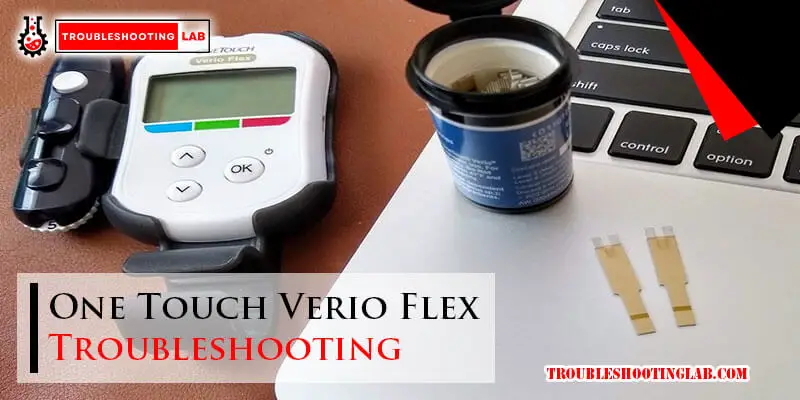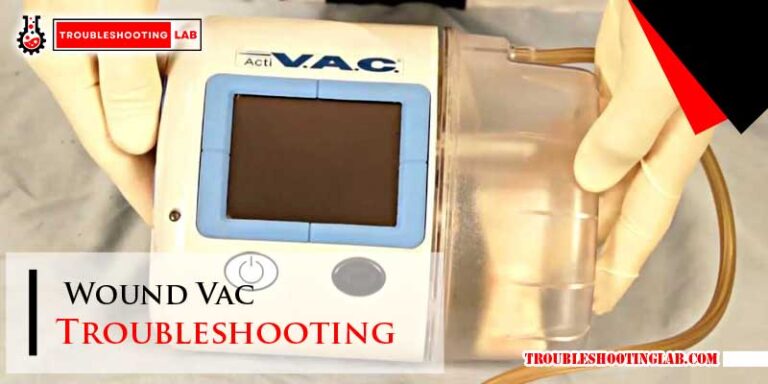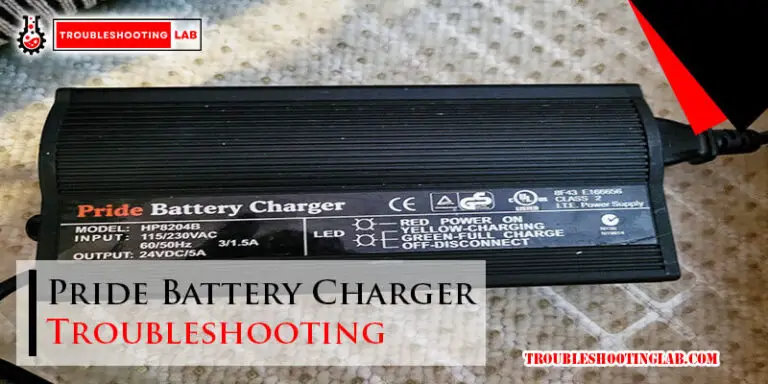One Touch Verio Flex Troubleshooting: Quick Fixes and Tips
Experiencing issues with your One Touch Verio Flex? Don’t worry, you’re not alone.
Many users face common problems with this blood glucose meter. The One Touch Verio Flex is a handy tool for managing diabetes. Yet, like any device, it can sometimes act up. Troubleshooting these issues can seem daunting. But with a bit of guidance, you can resolve most problems on your own.
This blog post will walk you through the most common issues and their solutions. Whether it’s error messages or connectivity problems, we’ve got you covered. Read on to discover how to keep your One Touch Verio Flex running smoothly.

Common Issues of One Touch Verio Flex
The One Touch Verio Flex is a user-friendly glucometer. It helps many people manage their diabetes. Yet, like any device, it can have issues. This section will address common problems and provide troubleshooting tips.
Battery Problems
Battery issues are common with the One Touch Verio Flex. Sometimes, the device won’t turn on. Check if the battery needs replacing. Make sure the battery is inserted correctly. Use the recommended battery type for best performance.
In some cases, the battery drains quickly. Ensure the device is turned off when not in use. Avoid storing the glucometer in very hot or cold places. Extreme temperatures can affect battery life.
Display Errors
Display errors can cause frustration. The screen might show strange symbols or be blank. First, check the battery. A low battery can cause display problems. If the battery is fine, reset the device. This can often fix display issues.
If the screen remains blank, inspect the test strip. It must be inserted correctly. A damaged test strip can also cause errors. Finally, ensure the glucometer is clean. Dust or dirt on the device can affect its performance.
How To Replace Battery of One Touch Verio Flex
The One Touch Verio Flex is a reliable blood glucose meter. But, if the battery dies, it won’t work. Replacing the battery is easy. Follow these steps to keep your meter running.
Steps To Replace The Battery
- Turn off the meter.
- Find the battery cover on the back.
- Use a small screwdriver to open the cover.
- Remove the old battery. Dispose of it properly.
- Insert a new CR2032 battery. Make sure the positive side faces up.
- Close the battery cover and screw it back in place.
- Turn on the meter to check if it works.
Battery Maintenance Tips
- Always use a high-quality CR2032 battery.
- Check the battery level regularly.
- Store the meter in a cool, dry place.
- Avoid exposing the meter to extreme temperatures.
- Replace the battery as soon as the meter shows low battery warning.
Proper battery maintenance ensures your meter works accurately. Follow these tips to extend battery life.
One Touch Verio Flex Display Problems
Experiencing display problems with your One Touch Verio Flex can be frustrating. Display issues can hinder your ability to monitor your blood glucose levels effectively. This section will guide you through common display issues and their solutions.
Blank Screen Solutions
A blank screen on your One Touch Verio Flex can indicate several issues. First, check if the device is turned on. Hold the power button for a few seconds to restart the device. If the screen remains blank, inspect the battery. Replace it if necessary. Sometimes, the battery may not be seated properly. Remove and reinsert it to ensure a good connection.
If the screen is still blank, try a reset. Refer to the user manual for specific reset instructions. If these steps do not work, contact customer support for further assistance.
Error Message Resolutions
Error messages on the One Touch Verio Flex display can be confusing. Common error messages include “Error 1” or “Error 2.” These usually relate to test strip issues. Ensure you are using the correct test strips for your device. Insert the test strip properly to avoid these errors.
Another common error message is “Battery Low.” Replace the battery immediately if you see this message. If you encounter an error message not listed in the manual, refer to the troubleshooting section. Sometimes, the device may need a firmware update. Check the manufacturer’s website for updates.
If error messages persist, it may indicate a more serious issue. Contact customer support for detailed troubleshooting steps.
One Touch Verio Flex Connectivity Issues
The One Touch Verio Flex is a reliable glucose meter. Yet, users often face connectivity issues. These issues may disrupt data transfer to your smartphone. Ensuring a seamless connection is vital for accurate glucose monitoring.
Bluetooth Pairing
Bluetooth pairing problems can hinder your device’s performance. Follow these steps to resolve them:
- Ensure Bluetooth is enabled on your smartphone.
- Keep your device within 5 meters of the meter.
- Restart the One Touch Verio Flex and your smartphone.
- Try to pair the devices again.
If these steps don’t work, consider resetting the Bluetooth settings on both devices. This often resolves persistent pairing issues.
App Syncing Troubles
Syncing the One Touch Verio Flex with its app is crucial. It helps you monitor your glucose levels accurately. Follow these steps to troubleshoot syncing issues:
- Ensure your app is up-to-date.
- Check for any pending app updates on your smartphone.
- Confirm that your smartphone has a stable internet connection.
- Restart your smartphone and the One Touch Verio Flex device.
If syncing issues persist, try reinstalling the app. This can often fix hidden bugs and glitches.
One Touch Verio Flex Test Strip Errors
One Touch Verio Flex is a trusted glucose meter. Users may face test strip errors during usage. These errors can disrupt your health monitoring. Knowing common errors can help you fix them quickly.
Incorrect Strip Insertion
Incorrect strip insertion is a frequent issue. Ensure the test strip is inserted with the gold side facing up. The strip must be fully inserted into the meter. If the meter does not start, remove the strip and try again. Check for any debris in the strip port. Clean it gently with a soft cloth.
Expired Test Strips
Using expired test strips can lead to inaccurate readings. Always check the expiration date on the test strip vial. If the strips are expired, discard them. Store your strips in a cool, dry place. Avoid exposing them to direct sunlight or extreme temperatures.
| Common Test Strip Errors | Possible Solutions |
|---|---|
| Incorrect Strip Insertion | Insert strip with gold side up |
| Expired Test Strips | Check expiration date, store properly |
Following these tips can help ensure accurate readings. Always keep your meter and strips in good condition. This ensures reliable monitoring of your glucose levels.
One Touch Verio Flex of Calibration
Calibration is crucial for the accuracy of your One Touch Verio Flex meter. Without proper calibration, the readings might be incorrect. This can affect diabetes management. Understanding calibration helps ensure reliable results.
When To Calibrate
Calibrate your One Touch Verio Flex meter in certain situations. First, after changing the battery. This ensures the meter works correctly. Second, if the meter is dropped or damaged. Check its accuracy after any physical shock. Third, when using a new test strip container. Each batch may have slight differences. Finally, if the readings seem inconsistent. This could signal a need for calibration.
Calibration Steps
Follow these steps to calibrate your One Touch Verio Flex meter. Begin by washing your hands thoroughly. Dry them completely. Turn on your meter. Insert a test strip into the meter. Wait for the meter to display a prompt.
Next, use the control solution. Apply a drop to the test strip. The meter will analyze the solution. Compare the result with the control range on the test strip container. Ensure the reading falls within this range.
If the reading is within the range, calibration is complete. If not, repeat the steps. Ensure your technique is correct. Contact customer support if issues persist. Proper calibration ensures accurate blood glucose monitoring.
Customer Support
Experiencing issues with your One Touch Verio Flex device can be frustrating. Thankfully, their customer support team is ready to help. This section will guide you through how to contact their support, understand your warranty, and manage repairs efficiently.
Contact Information
When you need assistance, the customer support team is just a call or email away. Here are the contact details:
| Method | Details |
|---|---|
| Phone | 1-800-227-8862 |
| support@onetouch.com | |
| Website | One Touch Support |
Warranty And Repairs
Your One Touch Verio Flex device comes with a warranty that covers defects in materials and workmanship. To check the status of your warranty:
- Visit the warranty page.
- Enter your device’s serial number.
- Review the warranty period and coverage details.
If your device needs repair, follow these steps:
- Contact customer support to report the issue.
- Provide your device’s serial number and purchase details.
- Follow the instructions given by the support team for shipping and repairs.
Using these resources, you can resolve issues with your One Touch Verio Flex device quickly and efficiently. Customer support is always there to help you get back on track.
Preventive Measures
Maintaining your One Touch Verio Flex device can extend its life and ensure accurate readings. Following preventive measures can help you avoid common issues and keep your device functioning smoothly. Let’s explore some crucial preventive steps.
Proper Storage
Store your One Touch Verio Flex in a cool, dry place. Avoid exposing it to extreme temperatures. High heat or cold can damage the device. Keep it away from direct sunlight. Moist environments can also harm the electronics inside.
Use the protective case that comes with the device. This shields it from dust and accidental drops. Ensure the storage area is clean and free from debris. Keeping the device in a safe place reduces the risk of physical damage.
Regular Maintenance
Regularly clean your One Touch Verio Flex to ensure accurate readings. Use a soft cloth to wipe the device. Avoid using harsh chemicals. They can damage the device’s surface. Check the test strip port for any debris. Clean it gently if needed.
Inspect the batteries periodically. Ensure they are not leaking. Replace them when they run low. Keeping fresh batteries helps maintain the device’s performance. Regular updates to the device’s software can also be beneficial. Ensure your device’s firmware is up-to-date.
| Maintenance Task | Frequency |
|---|---|
| Clean Device | Weekly |
| Check Batteries | Monthly |
| Update Firmware | Quarterly |
- Store in a cool, dry place
- Use the protective case
- Clean device weekly
- Check and replace batteries monthly
- Update firmware quarterly
Frequently Asked Questions
How Do I Reset My One Touch Verio Flex?
To reset, press and hold the “OK” button and the “C” button together for 10 seconds.
Why Is My One Touch Verio Flex Not Turning On?
Check the battery. Replace it if necessary. Ensure the battery is properly inserted.
How Do I Update My One Touch Verio Flex?
Connect to the OneTouch Reveal app. Follow the on-screen instructions to update the device software.
What Do Error Messages On One Touch Verio Flex Mean?
Error messages indicate issues like low battery, incorrect test strips, or device malfunction. Refer to the manual for solutions.
How Do I Clean My One Touch Verio Flex?
Use a soft, damp cloth. Avoid getting moisture into the device openings. Do not use alcohol or harsh chemicals.
Conclusion
Troubleshooting the One Touch Verio Flex can be simple. Follow the steps mentioned. Check connections and battery. Keep your device clean and dry. Contact support if needed. Regular maintenance ensures accuracy. Always monitor your health closely. Stay informed and take control of your diabetes management.
Proper care keeps your device reliable. Thank you for reading.






My Verio One Touch meter is reading high outside of my range every day for a week. It has never done that before. Been using it for 2 1/2 years. No diet or health change to explain higher readings. Could it be broken or have issues that should be fixed to make sure it’s working correctly? Should it be replaced?
If your One Touch Verio Flex isn’t turning on or displays an error message, first replace the battery with a new one to rule out power issues. For display problems, verify that the device isn’t exposed to extreme temperatures and check for moisture around the screen. If you’re experiencing connectivity issues, ensure Bluetooth is enabled and try re-pairing the device with the app. Test strip errors often result from incorrect insertion or expired strips, so confirm you’re using fresh, compatible test strips. If these steps don’t resolve the issue, consider resetting the device following the manufacturer’s guidelines or contact One Touch support for assistance.